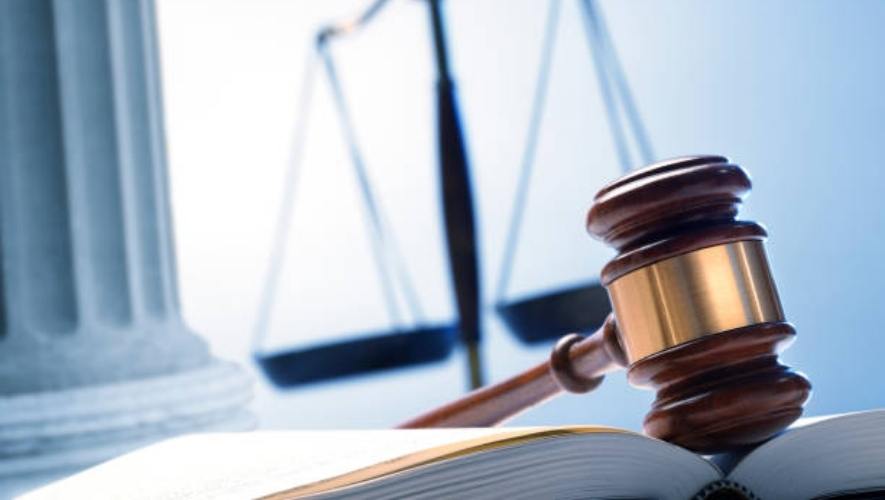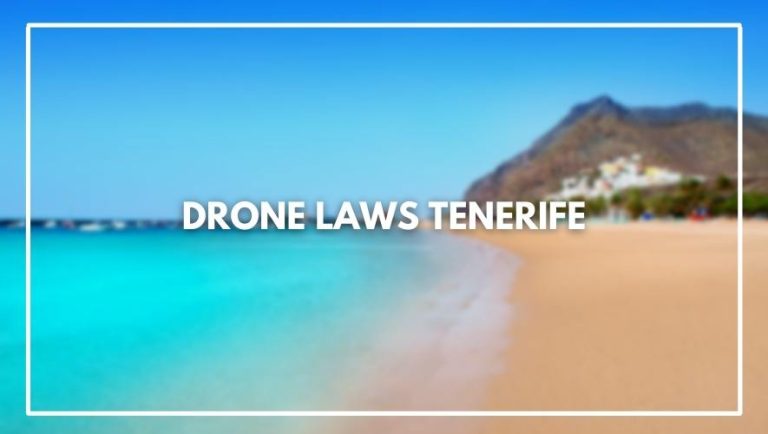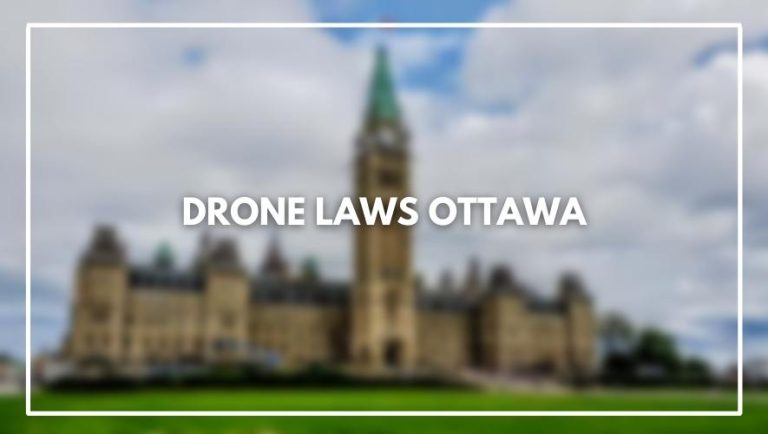Drone laws in Minnesota are strict, but it is possible to fly a drone here despite the regulations. You’ll have to follow a few rules and get a drone pilot’s license to legally use a drone in Minnesota. Learn about the MN drone laws in this guide.
If you’re flying a drone over 400 feet above the ground, you must notify the airport manager of your intentions and coordinate with them before takeoff. If you’re flying over private property without permission from the owner, you must notify them prior to takeoff.
Drones are still new technology and it seems as if the FAA is struggling to keep up with them (especially when you see the drones they lost over the ocean!). You can read our post on the Drone Laws in New York
Flying Drones Over Private Property
Flying drones over private property is legal if you have permission from the owner. This means that as long as your drone has been given access to a particular property, you can fly it there—as long as it’s not a restricted area (like a military base or airport), according to Minnesota state law.
It’s Illegal To Use Drones To Get Images
In Minnesota, it’s illegal to use drones to get images of people or their property for commercial purposes. A commercial purpose is any activity that involves goods or services being sold, including a news media outlet selling photographs taken with drones for profit.
If you’re using a drone as part of your job and you want to sell pictures that are taken by it, make sure you have permission from everyone involved before taking the photos!
To avoid violating this rule:
- Don’t fly over private property without consent (even if it looks like no one’s around). This includes farms, backyards and swimming pools because landowners may have privacy fences where they don’t want anyone looking in on them.
Drones Aren’t Allowed To Take Video
You are not permitted to take pictures or videos in places like prisons, caves and mines. The same goes for national parks as well. Other areas that you cannot fly a drone include military bases, airports and other sensitive areas.
Make Sure You Do It Legally And Safely!
If you decide to fly a drone in Minnesota, make sure you do it legally and safely!
- Stay below 400 feet. Flying an unmanned aircraft system (UAS) higher than 400 feet above ground level is illegal. You may need to request special permission from the FAA before flying your drone over or near certain facilities or locations (like airports).
- Don’t fly over people. It’s important that all operators understand that they should not fly over people who are not participating in the operation of their UAS. This is especially true when operating within five miles of an airport; some airports may require operators to obtain prior approval before flying within these zones.
How To Register Drone In Minnesota

Federal Aviation Administration (faa) Requires You To Register Your Drone
The Federal Aviation Administration (FAA) requires you to register your drone, which must be marked with your registration number. You can register online at https://www.faa.gov/
The process is free and all it takes is some basic information about yourself and the drone you’re registering. The FAA will send you a certificate of registration that must be kept with the aircraft at all times when in operation over public lands or waters.
You may also need to mark your drone if it weighs between 0 pounds (0 kg) and 55 pounds (25 kg). Marking is not required for drones under 0 pounds (0 kg), but marking them helps identify them as personal property if they get lost or stolen during flight operations in controlled airspace or within five miles (8 km) of an airport runway end zone area where takeoff/landings occur regularly.
You’ll Need To Register It Before You Fly.
You must register your drone if it weighs more than 250 grams (0.55 pounds) and less than 55 pounds.
This is important for a number of reasons, including:
- Drones are required to have an identification number. This number makes it easier for law enforcement to identify the owner of a drone if it’s involved in an accident or other incident.
- By registering your drone, you acknowledge that you understand the rules and regulations about flying drones in Minnesota.
- You will receive information about how to fly safely and responsibly with drones, including what height restrictions exist for drones in Minnesota airspace, where drones can be flown safely (such as away from airports), and what kinds of penalties may apply if someone violates these rules or regulations.
Your Drone’s Weight Is The Maximum Takeoff Weight
Your drone’s weight is the maximum takeoff weight of your drone, including all equipment on board or otherwise attached to the aircraft and ready for operation.
To determine your drone’s maximum takeoff weight (MTOW), you should weigh everything that is on board or otherwise attached to the aircraft and ready for operation. This includes any payload, such as batteries and cameras.
You should also include any additional equipment that is permanently installed, such as landing gear or gimbals.
While we strongly recommend that you weigh everything yourself so you know exactly how much it weighs before registration, if you don’t have a scale handy, here are some general rules of thumb:
- Your battery pack should be weighed separately from its corresponding drone model(s). For example: if you’re registering multiple DJI Spark drones with one battery pack each, then each battery pack will need its own unique MTOW value listed in the form’s drop-down menu; but if one Spark drone comes with two batteries total (a primary plus back-up), these would both share an MTOW value since they’re interchangeable between drones within this particular model line (i.e., they’re not “permanent” add-ons like landing gear).
- If there are additional accessories mounted directly onto an aerial vehicle body such as gimbal systems or GoPro mounts made specifically for use with that particular brand/model line (e.g., DJI Ronin MX gimbal) then those accessories need their own unique MTOW values written down somewhere near where they are mounted — preferably inside one another’s packaging!
You Will Have To Fill Out Faa Form
You will have to fill out the FAA Form and pay a registration fee by check or money order. You can get this form online at https://www.faa.gov/. This form allows you to register multiple drones in one filing, but only one per registration is needed for Minnesota residents.
You Can Complete The Registration Process Online
You can complete the registration process online or submit a paper form through the mail.
Online: To register your drone online, visit https://www.faa.gov/
If You Are Under 13 Years Old You Have To Have A Parent
If you are under 13 years old, your parent or guardian will have to fill out the registration form for you. Once they do, they must pay the $5 registration fee for each drone that is being registered.
The adult filling out the form must then mark each aircraft with its unique number from the certificate and carry it while flying.
Drones are not toys—they can be dangerous if not used properly or safely. Always remember to keep your drones away from crowds and other people in public areas like parks, playgrounds and streets where there are cars coming by fast enough to hurt someone if hit by one of these devices!
Make Sure To Print Out Your Faa Certification
Make sure to print out your FAA Certification of Aircraft Registration / Proof of Ownership right away as this is what you will use to mark your drone with your FAA registration number until your permanent certificate is mailed to you within 30 days of submitting your application.
If you have any questions about how or where to register a drone in Minnesota, feel free to contact us!
Are Drone Allowed In Minnesota?

Number Of Parks And Wildlife Management Areas Where You Cannot Fly A Drone.
There are a number of parks, forests and wildlife management areas where you cannot fly a drone. These include:
- Minnesota state parks
- Wildlife management areas (WMA)
- National wildlife refuges (NWR)
- Wilderness areas
- National forests
You Can’t Fly A Drone Near Airports
- Do not fly your drone near airports. You can get in trouble with the FAA if you do, and they will take you to court. It is illegal to fly within 5 miles of an airport!
- Do not fly over large crowds of people. This includes outdoor concerts, sporting events and festivals with more than 1,000 attendees.
- Do not fly over roads or highways unless you have permission from local authorities first! There are some exceptions (like farmers who want to check on their fields), but most people should just stay away from this area altogether unless there’s a specific reason why they need access—and even then it’s probably best for them just stick close enough so that they can see what’s going on without actually being up high enough where someone could potentially get hurt by them crashing down onto someone below them instead.”
Drones Help Farmers Monitor Crops.
Drones can also be used to monitor crops. Farmers can use drones to take pictures of their crops and assess crop damage, predict crop yields, and assess the health of crops.
Drones Have Been Used To Observe Traffic Jams
Now, drones can be used to observe traffic jams on freeways. Traffic congestion is a big problem in many cities, and it’s something that needs attention. The solution could be a drone flying overhead, keeping an eye on things. Drones have been used to monitor traffic jams on freeways.
Drone Was Used By Minnesota Law Enforcement Officers
A drone was used by Minnesota law enforcement officers to track a suspect fleeing from police.
The drone was used in a pursuit of a suspect, which saved time and money. The use of the drone allowed law enforcement officers to track the suspect from above, rather than having to follow them on foot or in vehicles.
This method not only helped save time and resources; it also increased officer safety because they could focus on locating and apprehending the suspect rather than chasing him down on foot or in vehicles.
The Faa Also Has Regulations About Drones.
The FAA has regulations about drones, too. Here are some of the main things you should keep in mind when flying your drone:
- Fly in good weather conditions and keep your drone within your line of sight at all times. If you’re having a hard time seeing what’s going on around your drone, it’s probably not safe to fly it.
- Do not fly over 400 feet high or near people, stadiums or airports without first obtaining permission from the airport manager (or equivalent person).
- Do not fly near airports with an operating control tower unless you have authorization from the airport operator (or equivalent person).
- This applies even if the airport is closed at night and no aircraft are expected to operate during that time period – if there’s a chance an airplane may take off or land sometime soon after dark, don’t fly there!
Places You Want To Fly It Before Launching It Into The Air!
- Make sure you can fly your drone in the places you want to fly it before launching it into the air!
- Check if there are any local regulations regarding drones, such as no-fly zones. If you’re flying a drone in Minnesota, this is especially important.
- Check if there are any FAA regulations regarding drones, such as no-fly zones and height restrictions (don’t fly your drone higher than 400 feet).
- If you’re planning on flying over public parks or beaches, make sure they have similar rules as those enacted by state governments—or even stricter ones.
Conclusion
If you’re not flying your drone over 400 feet, and it’s not carrying any hazardous materials, you’re good to go. If you are flying over 400 feet, or if your drone is carrying hazardous materials, then you’ll need to get a permit from the FAA.
These drone laws are set forward by the FAA. If you plan on getting your own drone in the future, know these laws to make sure you are flying safely and to avoid any penalties.
Hopefully, you enjoyed this guide on drone laws in Minnesota and found it useful. If you have any comments or questions, please feel free to leave them below.
Frequently Asked Questions (drone Laws Minnesota)
Do I Need A Permit To Fly A Drone In Minnesota?
No, you do not. The FAA requires all drone operators to register their aircraft and follow the rules that they publish online, but there is no such requirement for a state permit.
While it’s important to follow the FAA regulations and guidelines, it’s also important to be aware of any local or state laws that might apply in your area.
For example, if you’re flying near an airport or other sensitive areas like military bases or prisons (which are listed on the FAA website), then you may need to contact local law enforcement and/or airport officials before doing so.
What Drone Regulations Exist In Minnesota?
The FAA has set forth some key restrictions for flying drones in Minnesota:
- You cannot fly your drone higher than 400 feet above ground level (AGL) within a city or town.
- You can only fly your drone at night if you are more than three miles away from any airport, heliport, seaplane base or other areas where aircraft take off and land. Additionally, you must be able to see your drone with your own eyes at all times while it is in flight.
Where Can I Fly My Drone In Minnesota?
You can fly your drone in any public place, but be mindful of your surroundings and other people. Locating a good spot to fly your drone is easy because there are so many parks in Minnesota.
To get the most out of flying drones in public areas, keep them below 400 feet, stay at least 5 miles away from airports and heliports, and don’t fly over crowds unless you have permission from the police or fire department.
Can I Get A Waiver From The Faa In Minnesota?
You can apply for a waiver only in emergency situations and the FAA will not grant waivers for non-emergency situations.
They will also not grant waivers to commercial drones, which is why you need to know if your drone is a hobby or commercial aircraft before operating it in Minnesota.
Are There Any Restrictions For Flying A Drone At Night In Minnesota?
A drone must be visible and in your line of sight at all times. You must be able to see it, as well as any other people or animals on the ground. You must also be able to see the shadow of your drone.
Do I Need A Special License To Fly A Recreational Drone In Minnesota?
No, you don’t need a special license to fly a recreational drone in Minnesota. But you will need to register your drone with the FAA and follow all of their rules and regulations.

![Drone laws Tanzania [March 2023] [Rules & How to Register]](https://discoveryoftech.com/wp-content/uploads/2022/08/drone-13-1-768x434.jpg)
![Drone laws England [March 2023] [Rules & How to Register]](https://discoveryoftech.com/wp-content/uploads/2022/08/drone-2-768x434.jpg)



![Drone laws in Brazil [March 2023] [Rules & How to Register]](https://discoveryoftech.com/wp-content/uploads/2022/08/drones-59-768x434.jpg)